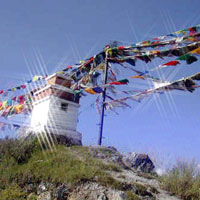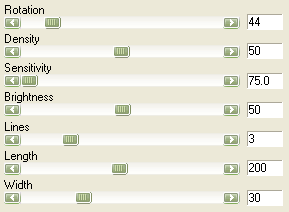 Effects - Star
Effects - Star Effects - Star
Effects - StarThe Star effect applies star patterns to the picture, based on
where the bright areas in the picture are.
In real-life, star filters contain miniscule carvings on an
otherwise transparent surface, which scatter incoming light in a
way that creates the star shapes.
 Rotation
RotationYou can rotate the star shape a full 360°. Depending on the number of lines in the star, rotation can repeat itself.
This determines both the size and number of stars; higher density packs more stars in the filter, making them smaller as a result.
Lower sensitivity results in more stars being visible, higher sensitivity only shows stars on the very brightest parts of the picture.
Brightness controls the brightness of the stars themselves.
Brighter stars are more visible but may look less realistic.
In real-life, brightness would be primarily determined by the depth
of the carvings and in a lesser extend to the smoothness of these
carvings.
The number of lines in a star. Note that since all lines cross in the the middle of a star shape, each additional line results in two additional "points" to a star shape.
Length of the lines in a star. Shorter lengths are generally
more realistic, but longer lengths are more visible.
The equivalent in real-life would be based mostly on the brightness
of the light sources and the angle of the filter in reference to
them.
The width control determines both the width and sharpness of the
star lines, as a wider star will automatically become less
sharp.
In real-life, the width is determined by the angle of the carvings;
more shallow angles produce less sharp lines.